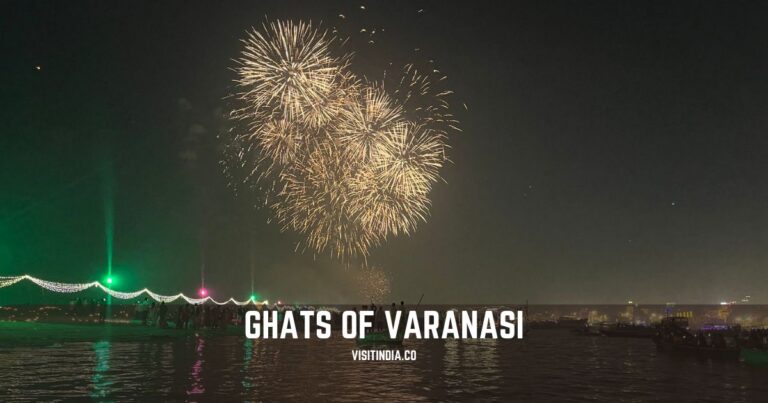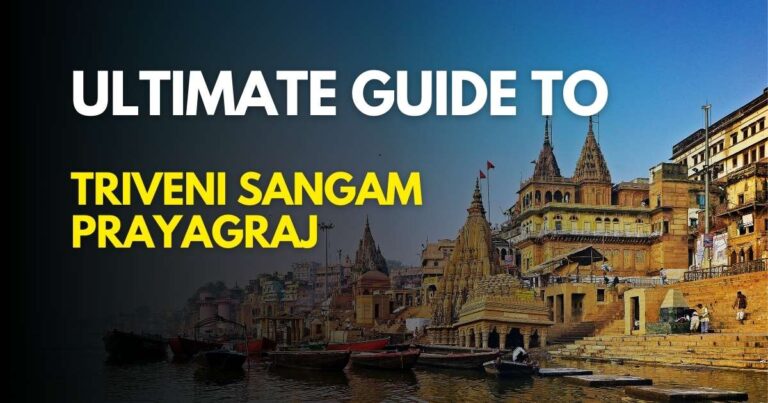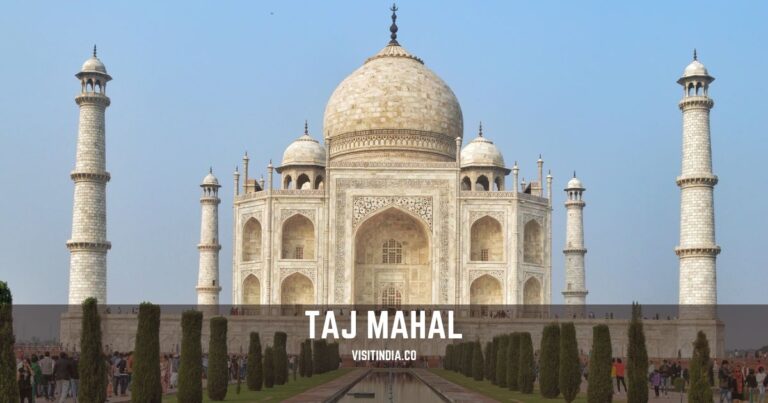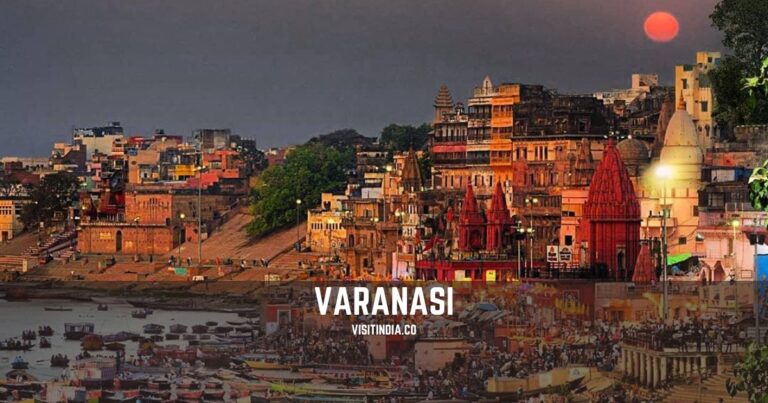Manikarnika Ghat: Aarti Time, Cremation and Tips for Visiting
Nestled along the banks of the sacred Ganges River, Manikarnika Ghat is one of Varanasi’s most revered cremation sites and a powerful symbol of the city’s spiritual significance. As the flames of funeral pyres burn day and night, this ancient ghat stands as a gateway to liberation, where the cycle of life and death takes on profound meaning for millions of Hindus.
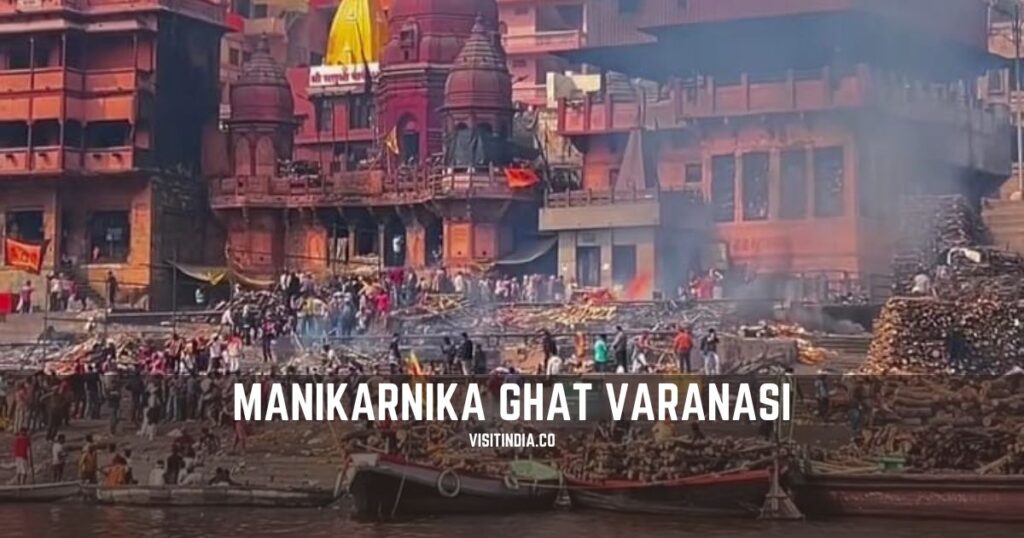
In this article, we’ll delve into the deep cultural and religious importance of Manikarnika Ghat, uncovering its history, rituals, and the mysticism that surrounds it. Whether you’re a spiritual seeker, a history enthusiast, or simply curious about India’s oldest living city, this journey into Varanasi’s heart promises to be both enlightening and awe-inspiring.
See also: Best Things to Do in Varanasi
Cremation Rituals at Manikarnika Ghat
Manikarnika Ghat, situated along the Ganges River in Varanasi, holds profound significance in Hindu culture as a sacred cremation site. It’s a place where life and death converge, offering a unique glimpse into the spiritual practices that define this ancient city.
The Eternal Flame
At the heart of Manikarnika Ghat burns an eternal flame, believed to have been alight for centuries. This flame is central to the cremation rituals performed here, symbolizing the perpetual cycle of creation, preservation, and destruction in Hindu philosophy.
According to legend, the flame was ignited by Lord Shiva himself, underscoring its divine origin and the ghat’s sanctity.
Cremation Process
Daily, numerous cremations take place at Manikarnika Ghat, each following time-honored traditions. The process begins with the body being bathed in the holy waters of the Ganges, a ritual purification. The deceased is then adorned with sandalwood paste and garlands, symbolizing purity and respect.
The body is placed on a pyre constructed from carefully arranged wooden logs. The eldest son or a close male relative typically lights the pyre using the sacred eternal flame, signifying the soul’s release from the physical world. Throughout the cremation, priests chant sacred mantras, guiding the soul towards liberation, or moksha.
Role of the Dom Community
The Dom community plays a pivotal role in the cremation rituals at Manikarnika Ghat. Traditionally regarded as custodians of the sacred flame, they oversee the entire cremation process, ensuring that rituals are performed correctly.
Despite their essential role in these sacred rites, the Dom community has historically faced social ostracism and economic challenges. Their contributions are integral to the spiritual fabric of Varanasi, embodying a deep connection to the city’s religious heritage.
Cultural and Spiritual Significance of Manikarnika Ghat
Manikarnika Ghat holds profound cultural and spiritual importance in Hinduism. It’s a place where the cycle of life and death is deeply intertwined with beliefs about the soul’s journey.
Liberation Through Cremation
A central tenet in Hindu philosophy is the concept of moksha, or liberation from the cycle of rebirth. Cremation at Manikarnika Ghat is believed to facilitate this ultimate release. The ghat’s sanctity stems from its association with Lord Shiva, who is said to whisper the Taraka mantra into the ears of the deceased, guiding their souls toward salvation.
This belief underscores the ghat’s role as a bridge between the earthly realm and the divine.
Connection to Varanasi’s Spiritual Identity
Varanasi, often referred to as the “City of Salvation,” embodies the quest for spiritual liberation. Manikarnika Ghat stands as a testament to this identity, serving as a sacred site where the living and the departed converge.
The continuous cremations performed here are not merely rituals but are seen as sacred rites that affirm the city’s role in the spiritual journey of countless souls.
Manikarnika Kund
Adjacent to the ghat lies the Manikarnika Kund, a revered water tank with its own spiritual significance. According to legend, this kund was created by Lord Vishnu’s chakra during his penance, and it predates the flow of the Ganges itself.
Devotees believe that a dip in its waters purifies the soul, and it plays a vital role in the rituals conducted at the ghat. The kund’s presence adds a layer of sanctity to the site, intertwining mythological narratives with daily spiritual practices.
Nearby Attractions
Exploring the area around Manikarnika Ghat in Varanasi offers a rich tapestry of spiritual and cultural experiences. Just a short walk away lies the revered Kashi Vishwanath Temple, dedicated to Lord Shiva. This temple is a focal point for pilgrims and stands as a testament to the city’s deep-rooted religious heritage.
Nearby, Dashashwamedh Ghat is renowned for its vibrant evening Ganga Aarti, a mesmerizing ritual that draws both devotees and visitors.
The vicinity of Manikarnika Ghat provides a unique glimpse into the cycle of life and death, with daily ceremonies that reflect the city’s spiritual essence.
For a broader perspective, consider taking a boat ride along the Ganges. These excursions offer panoramic views of the ghats and the city’s skyline, especially enchanting during sunrise and sunset.
To immerse yourself in local culture, explore the bustling markets near the ghats. Here, you can find traditional Banarasi silk sarees, handcrafted jewelry, and artisanal crafts. Sampling local street food, such as kachori and jalebi, adds a flavorful dimension to your visit, allowing you to savor the authentic tastes of Varanasi.
Best Time to Visit Manikarnika Ghat
The winter months, from October to March, offer pleasant weather, making it an ideal time to explore the ghat comfortably. During this period, temperatures are moderate, and the atmosphere is vibrant with various cultural activities.
Visiting during festivals like Kartik Purnima and Dev Deepawali provides a unique opportunity to witness the ghat illuminated with thousands of lamps, creating a mesmerizing scene that reflects the city’s rich traditions.
Tips for Visiting Manikarnika Ghat
Understanding the customs at Manikarnika Ghat is essential. As a sacred cremation site, it’s important to observe quietly and respect the solemnity of the rituals. Photography is generally discouraged, especially during ceremonies, to maintain the sanctity of the proceedings.
When visiting, consider carrying essentials like a water bottle to stay hydrated, and dress modestly to respect local sensibilities. Engaging a local guide can provide deeper insights into the cultural and spiritual significance of the ghat, enriching your experience.
Safety and etiquette are paramount. Be mindful of your belongings in crowded areas, and approach interactions with locals respectfully. Understanding and adhering to these guidelines will ensure a meaningful and respectful visit to this sacred site.
Final Thoughts on Manikarnika Ghat
Manikarnika Ghat is more than just a cremation site; it embodies the profound spiritual ethos of Varanasi, offering a glimpse into the cycle of life, death, and liberation. Visiting this sacred space provides a deeper understanding of Hindu beliefs, cultural traditions, and the enduring connection between humanity and the divine.
Whether you’re drawn to its historical significance, captivated by its rituals, or seeking a moment of introspection, Manikarnika Ghat leaves an indelible mark on the soul. As the eternal flames continue to burn, they remind us of life’s impermanence and the timeless quest for moksha, making this spiritual haven a truly transformative experience.

